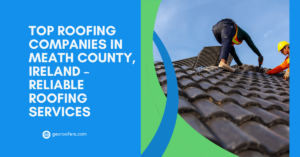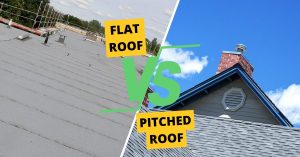Is your roof prepared to withstand the elements? Whether you’re dealing with a leaky roof or simply want to take preventative measures, waterproofing your roof is essential for protecting your home and ensuring its longevity. In this comprehensive guide, we’ll explore 7 DIY methods to waterproof your roof effectively, especially focusing on flat roofs. From understanding the importance of proper waterproofing to practical tips and materials, this article covers everything you need to know to safeguard your roof against water damage.
1. Assessing Your Roof: Where Does the Problem Lie?
Before diving into DIY waterproofing methods, it’s crucial to assess the condition of your roof. Look for signs of damage such as leaks, cracked shingles, or pooling water. Understanding the extent of the issue will help determine the appropriate waterproofing solution. Consider conducting a thorough inspection at least twice a year to catch any potential problems early on.
2. Choosing the Right Waterproofing Material: Membranes vs. Sealants

When it comes to waterproofing your roof, selecting the right material is key. Membranes, such as EPDM or bitumen, offer long-lasting protection and are ideal for flat roofs. On the other hand, liquid applied sealants provide a quick and easy solution for small repairs and maintenance. Understanding the pros and cons of each option will help you make an informed decision based on your specific needs and budget.
3. DIY Application Process: Step-by-Step Guide
Now that you’ve chosen your waterproofing material, it’s time to get to work. Start by cleaning the roof surface to remove any debris or dirt that could interfere with adhesion. Next, apply the liquid membrane or sealant using a brush or roller, ensuring full coverage and paying special attention to areas prone to leaks, such as seams and flashing. Allow sufficient time for the material to cure before exposing it to water or UV rays.
4. Identifying Common Problem Areas: Leaks and Damaged Shingles

Leaky roofs can cause extensive damage to your home if left unchecked. Inspect your roof regularly for signs of leaks, such as water stains or mold growth, and address them promptly. Furthermore, keep an eye out for damaged shingles or areas where the roof membrane may be compromised. Taking swift action to repair these issues will help prevent further water damage and prolong the life of your roof.
5. Maintenance Tips: Keeping Your Roof in Top Condition
Prevention is key when it comes to roof maintenance. Clear dead leaves and branches from gutters and roof surfaces regularly to prevent water buildup and potential damage. Additionally, consider installing heat tape along the edges of your roof to prevent ice dams during the winter months. By staying proactive and addressing any issues as they arise, you can avoid costly repairs down the line.
6. When to Call in the Professionals: Knowing Your Limits
While DIY Roof waterproofing methods can be effective for minor repairs and maintenance, some situations may require the expertise of a professional roofing contractor. If you’re dealing with extensive damage or are unsure of how to proceed, don’t hesitate to contact a professional for assistance. They have the knowledge and tools to assess the situation accurately and recommend the best course of action for your roof.
7. Ensuring Compatibility: Choosing the Right Waterproofing Method
Finally, it’s essential to consider the compatibility of the waterproofing method with your existing roof structure. Different materials and application processes may be better suited to certain roof types than others. Take the time to research and select a waterproofing solution that aligns with your roof’s specifications for optimal results and long-lasting protection.
In conclusion, waterproofing your roof is a crucial step in maintaining the integrity of your home and protecting it from water damage. By following these 7 DIY methods and staying proactive with maintenance, you can ensure that your roof remains watertight for years to come.
Key Takeaways:
- Regularly inspect your roof for signs of damage or leaks.
- Choose the right waterproofing material for your specific needs and budget.
- Follow proper application techniques for optimal results.
- Address any issues promptly to prevent further damage.
- When in doubt, consult a professional roofing contractor for assistance.






